Biochemical characterization, anti-inflammatory properties and ulcerogenic traits of some cold-pressed oils in experimental animals
- PMID: 28056572
- PMCID: PMC6130677
- DOI: 10.1080/13880209.2016.1275705
Biochemical characterization, anti-inflammatory properties and ulcerogenic traits of some cold-pressed oils in experimental animals
Abstract
Context: Cold-pressed oils (CPO) are commercially available in the market and characterized by their health-promoting properties.
Objective: Clove oil (CLO), coriander seed oil (COO) and black cumin oil (BCO) were evaluated for their bioactive lipids. Pharmacological screening was performed to evaluate acute toxicity, anti-inflammatory and ulcerogenic effects as well as histopathological changes in tissues of albino rats fed with CPO.
Materials and methods: Fatty acids, tocols and total phenolics were analyzed. The acute toxicity test for each CPO was estimated during 14 d. Carrageenan-induced rat paw oedema was used for assessment of anti-inflammatory activity of CPO. Animals were fasted overnight, and via oral gavage given indomethacin (10 mg/kg) or CPO (400 mg/kg) to investigate ulcerogenecity. Histopathological changes in liver, kidney, heart, spleen and stomach were screened.
Results: Amounts of α-, β-, γ- and δ-tocopherols in CLO were 1495, 58, 4177 and 177 mg/kg oil, respectively. In COO, α, β, γ and δ-tocopherols were 10.0, 18.2, 5.1 and 34.8%, respectively. In BCO, β-tocotrienol was the main constituent. CLO, COO and BCO contained 4.6, 4.2 and 3.6 mg GAE/g, respectively. Acute toxicity test determined that 400 mg/kg of CPO to be used. In the carrageenan model of inflammation, pretreatment of rats with indomethacin (10 mg/kg) or CLO (400 mg/kg) induced a significant (p < 0.05) reduction by 31.3 and 27.4%, respectively, in rat paw oedema as compared with the carrageenan-treated group. Indomethacin induced a significant ulcerogenic effect with an ulcer index of 19. Oral treatment of CPO showed no ulcerogenic effect, wherein no histopathological changes were observed.
Conclusions: CPO, particularly CLO, could minimize acute inflammation.
Keywords: Coriandrum sativum; LD50; Nigella sativa; Syzygium aromaticum; paw oedema; ulcer index.
Figures

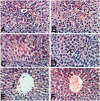
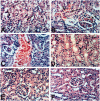
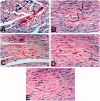
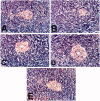
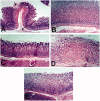
Similar articles
-
Bioactive lipids, radical scavenging potential, and antimicrobial properties of cold pressed clove (Syzygium aromaticum) oil.J Med Food. 2013 Nov;16(11):1046-56. doi: 10.1089/jmf.2012.0288. Epub 2013 Nov 4. J Med Food. 2013. PMID: 24180551
-
Hepatoprotective effect of cold-pressed Syzygium aromaticum oil against carbon tetrachloride (CCl4)-induced hepatotoxicity in rats.Pharm Biol. 2016 Aug;54(8):1364-72. doi: 10.3109/13880209.2015.1078381. Epub 2015 Oct 6. Pharm Biol. 2016. PMID: 26440388
-
Radical scavenging activity of black cumin (Nigella sativa L.), coriander (Coriandrum sativum L.), and niger (Guizotia abyssinica Cass.) crude seed oils and oil fractions.J Agric Food Chem. 2003 Nov 19;51(24):6961-9. doi: 10.1021/jf0346713. J Agric Food Chem. 2003. PMID: 14611155
-
Antioxidant property of Nigella sativa (black cumin) and Syzygium aromaticum (clove) in rats during aflatoxicosis.J Appl Toxicol. 2005 May-Jun;25(3):218-23. doi: 10.1002/jat.1057. J Appl Toxicol. 2005. PMID: 15856529
-
Safety assessment of coriander (Coriandrum sativum L.) essential oil as a food ingredient.Food Chem Toxicol. 2009 Jan;47(1):22-34. doi: 10.1016/j.fct.2008.11.006. Epub 2008 Nov 12. Food Chem Toxicol. 2009. PMID: 19032971 Review.
Cited by
-
Fatty Acid Profile, Total Phenolic Content, and Antioxidant Activity of Niger Seed (Guizotia abyssinica) and Linseed (Linum usitatissimum).Front Nutr. 2021 Aug 2;8:674882. doi: 10.3389/fnut.2021.674882. eCollection 2021. Front Nutr. 2021. PMID: 34409060 Free PMC article.
-
Beta-Tocotrienol Exhibits More Cytotoxic Effects than Gamma-Tocotrienol on Breast Cancer Cells by Promoting Apoptosis via a P53-Independent PI3-Kinase Dependent Pathway.Biomolecules. 2020 Apr 9;10(4):577. doi: 10.3390/biom10040577. Biomolecules. 2020. PMID: 32283796 Free PMC article.
-
Biochemical Characterization of Some Varieties of Apricot Present in the Vesuvius Area, Southern Italy.Front Nutr. 2022 Mar 8;9:854868. doi: 10.3389/fnut.2022.854868. eCollection 2022. Front Nutr. 2022. PMID: 35350414 Free PMC article.
-
Chemical composition and hepatoprotective effect of essential oil from Myrtus communis L. flowers against CCL4-induced acute hepatotoxicity in rats.RSC Adv. 2019 Jan 28;9(7):3777-3787. doi: 10.1039/c8ra08204a. eCollection 2019 Jan 25. RSC Adv. 2019. PMID: 35518089 Free PMC article.
-
The protective effect of various forms of Nigella sativa against hepatorenal dysfunction: underlying mechanisms comprise antioxidation, anti- inflammation, and anti-apoptosis.Front Nutr. 2025 May 13;12:1553215. doi: 10.3389/fnut.2025.1553215. eCollection 2025. Front Nutr. 2025. PMID: 40432961 Free PMC article.
References
-
- Arens M, Schulte E, Weber K.. 1994. Fettsäuremethylester, Umesterung mit trimethylsulfoniumhydroxid (Schnellverfahren). Fat Sci Technol 96:67–68.
-
- Bajpai M, Mishra A, Prakash D.. 2005. Antioxidant and free radical scavenging activities of some leafy vegetables. Inter J Food Sci Nutr 56:73–81. - PubMed
-
- Calder PC.2008. Polyunsaturated fatty acids, inflammatory processes and inflammatory bowel diseases. Mol Nutr Food Res 52:885–897. - PubMed
-
- Cárdeno A, Sánchez-Hidalgo M, Alarcón-de-la-Lastra C.. 2013. An up-date of olive oil phenols in inflammation and cancer: molecular mechanisms and clinical implications. Curr Med Chem 20:4758–4776. - PubMed
MeSH terms
Substances
LinkOut - more resources
Full Text Sources
Other Literature Sources
